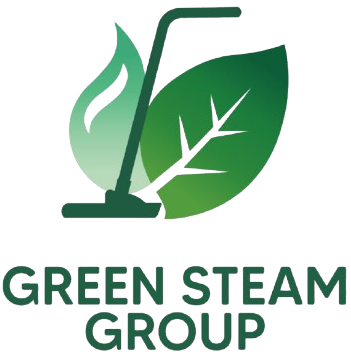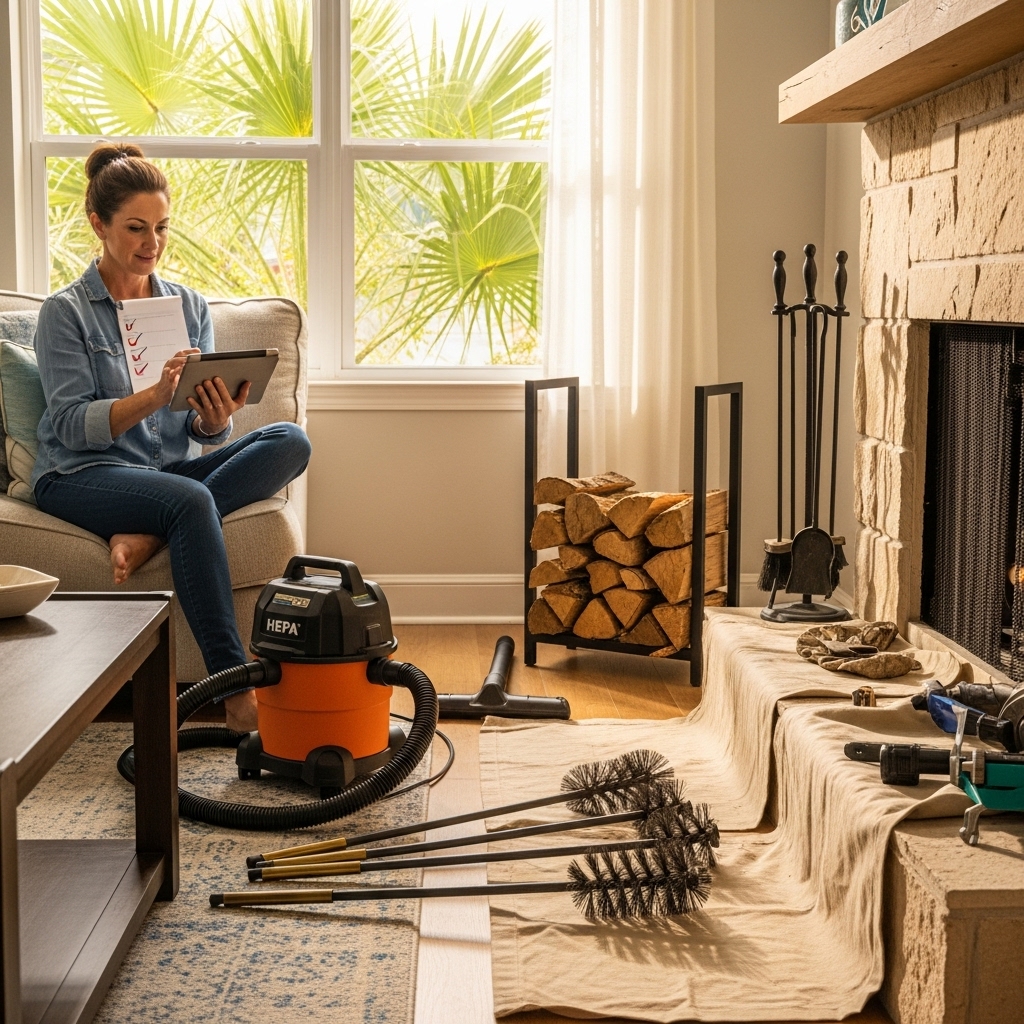Whether you burn wood a few weekends a year or simply maintain a decorative chimney, a well-structured checklist keeps your Tampa home safer and your fireplace operating smoothly. Warm, humid air, salty breezes, and sudden storms all affect how chimneys age on Florida’s Gulf Coast. Use the detailed checklist below to prepare for the season, monitor performance, and know when to call a professional. If you prefer to outsource the work, coordinate your plan with a reputable provider of chimney cleaning so you never miss important maintenance milestones.
This homeowner-friendly guide covers tools, inspection points, cleaning steps, storm-readiness, and safety tips specific to Tampa’s climate and home styles. Even if you use your fireplace sparingly, these checks help prevent moisture damage, corrosion, and surprise issues that can surface the next time you strike a match.
Pre-Season Preparation Checklist
Get ahead of Tampa’s first cool front by preparing your system before you light the season’s first fire.
- Clear the hearth: remove old ashes, vacuum with a HEPA filter, and clean grates and andirons.
- Inspect firebox masonry or panels for cracks, loose joints, or spalling. Document with photos.
- Test the damper: open, close, and check alignment. Lubricate pivots if safe for your hardware type.
- Examine the smoke shelf with a flashlight and small mirror; remove leaf litter or debris.
- Check the flue with a light from below. If deposits are more than 1/8 inch thick or shiny, schedule a cleaning.
- Go outside: confirm the cap is secure and the mesh screen intact; look for rust, sagging, or missing screws.
- Scan the crown for cracks and the flashing for gaps; seal minor hairlines with approved products.
- Trim branches away from the chimney to reduce downdrafts and leaf accumulation.
- Stock dry, seasoned firewood if you burn wood; store off the ground and covered, away from the home.
Essential Tools for DIY Maintenance
You don’t need a van full of gear to handle basic upkeep. A few thoughtfully chosen tools deliver clean results.
- HEPA shop vacuum with soot filter bags.
- Firebox and crevice brushes; stiff hand brush for masonry.
- Chimney brush and fiberglass rods matched to your flue size and shape.
- Work gloves, respirator, and eye protection.
- Drop cloths and plastic sheeting to contain soot.
- Headlamp, inspection mirror, and smartphone camera for documentation.
- Masonry-safe cleaner for stains; non-etching and low-odor options are best indoors.
Monthly In-Season Fireplace Checks
Even with light use, monthly checks keep you ahead of soot buildup and weather-related wear.
- Scan the firebox for new cracks, discoloration, or loose joints.
- Verify the damper still opens fully and seals when closed.
- Brush loose soot off the smoke shelf; vacuum debris.
- Observe flame quality: strong, lively flames indicate good draft; lazy smoke means it’s time for cleaning or diagnosis.
- Check for odors on humid days; musty or sharp creosote smells suggest deposits or moisture intrusion.
- Walk outside after a fire: confirm smoke disperses upward and the cap screen remains clear.
Mid-Season Light Cleaning Steps
Perform a quick clean halfway through the season to maintain good draft and reduce odors.
- Remove cooled ashes and vacuum fine dust with a HEPA filter.
- Brush the firebox walls and hearth; spot-clean soot stains with a masonry-safe cleaner.
- Open the damper and clean the throat and smoke shelf area with a crevice brush.
- Check the flue visually; if you see flaky accumulations or glazed spots, pause and schedule professional service.
- Verify the cap, crown, and flashing are still secure after winter winds or storms.
After-Storm Rapid Inspection for Tampa Homes
High winds and heavy rain can disrupt a chimney even if you haven’t used it recently. Keep this response checklist handy.
- From the ground, look for a missing or tilted cap; note any debris on the roof around the chimney.
- Inspect attic spaces near the chimney for damp insulation or water stains.
- Shine a light up the flue from the firebox; check for obstructions or daylight in odd places.
- Operate the damper; confirm it hasn’t shifted or jammed.
- Smell for strong creosote or animal odors that suggest intrusion.
Red Flags That Require a Professional
Some findings are beyond DIY. When you see these, stop and call an expert to prevent further damage.
- Glazed, shiny creosote or thick tar-like deposits.
- Cracked or displaced flue tiles; missing mortar joints in the flue.
- Persistent smoke spillage or backdrafting despite an open damper and dry firewood.
- Water stains on ceilings or walls near the chimney chase.
- Damaged cap mesh, animal nests, or signs of pest habitation.
- Loose or corroded metal liners; rust flakes in the firebox.
Annual Cleaning and Inspection Plan
Tampa’s mild winters can lull homeowners into thinking infrequent fires don’t create risks. The better approach is to schedule an annual inspection before the heating season and cleaning as needed. Documentation each year establishes a baseline, making it easier to spot changes caused by humidity, salt air, or wind-driven rain. If your system shows recurring issues, consider upgrading the cap, improving the crown, or installing a top-sealing damper to limit off-season air exchange.
Efficiency Tips for Better Draft
Clean chimneys draft more reliably, but a few operational habits improve performance, too.
- Burn dry, seasoned hardwoods; keep moisture content low to reduce creosote.
- Pre-warm the flue by holding a rolled newspaper torch near the damper for a minute before lighting kindling.
- Open a nearby window a crack if your home is very tight or if kitchen/bath fans are running.
- Build smaller, hotter fires that burn cleanly; avoid smoldering logs.
- Keep the grate centered to allow airflow around fuel.
Detailed Cleaning Sequence (DIY-Friendly)
When your checks indicate it’s time to clean, follow this streamlined sequence.
- Protect the room with drop cloths; seal the fireplace opening partially with plastic, leaving access for tools.
- Remove ashes and vacuum fine dust with a HEPA filter.
- Brush the firebox and andirons; clean soot stains sparingly with approved cleaner.
- Open the damper fully; brush the throat area and smoke chamber transition.
- From the roof, remove the cap and brush the flue top-down with the correct brush size and gentle strokes.
- Vacuum debris from the smoke shelf and cleanout door if present.
- Reinstall the cap and confirm secure fasteners and intact mesh.
Documentation and Home Records
Keep a simple log of each inspection and cleaning. Note dates, findings, photos, and any recommendations from professionals. Over time, this record becomes a powerful tool for selling your home, validating maintenance to insurers, and planning upgrades that will reduce future upkeep.
Mid-Article Reminder
If you decide your system needs more than a light touch, plan a convenient appointment for professional chimney cleaning before Tampa’s brief burn season begins. Booking early helps you avoid schedule crunches during the first cool snap.
Frequently Asked Questions
- How often should I clean my chimney in Tampa? Schedule an annual inspection and clean as needed. Even light users benefit from yearly checks because of humidity and storms.
- Do gas fireplaces need attention? Yes. While they produce less soot, moisture and acidic byproducts can corrode liners and caps.
- Can I skip cleaning if I only had a couple of fires? Not recommended. Soot and moisture can still react and cause odors or corrosion over the summer.
- What’s the best time of year to schedule service? Late summer or early fall—before the first cool front—offers the most availability and avoids in-season delays.
- Is creosote a problem in Florida? Yes. Short, cool burns can generate creosote, and humidity can worsen odors and residue.
- What if animals got inside? Don’t light a fire. Have nests safely removed and install a secure cap with appropriate mesh.
Take the Next Step
With a clear checklist, you can keep your chimney safe, efficient, and storm-ready. If today’s inspection turned up concerns—or if you simply prefer a hands-off approach—book expert chimney cleaning and enjoy a worry-free season with a fireplace that’s ready when you are.

